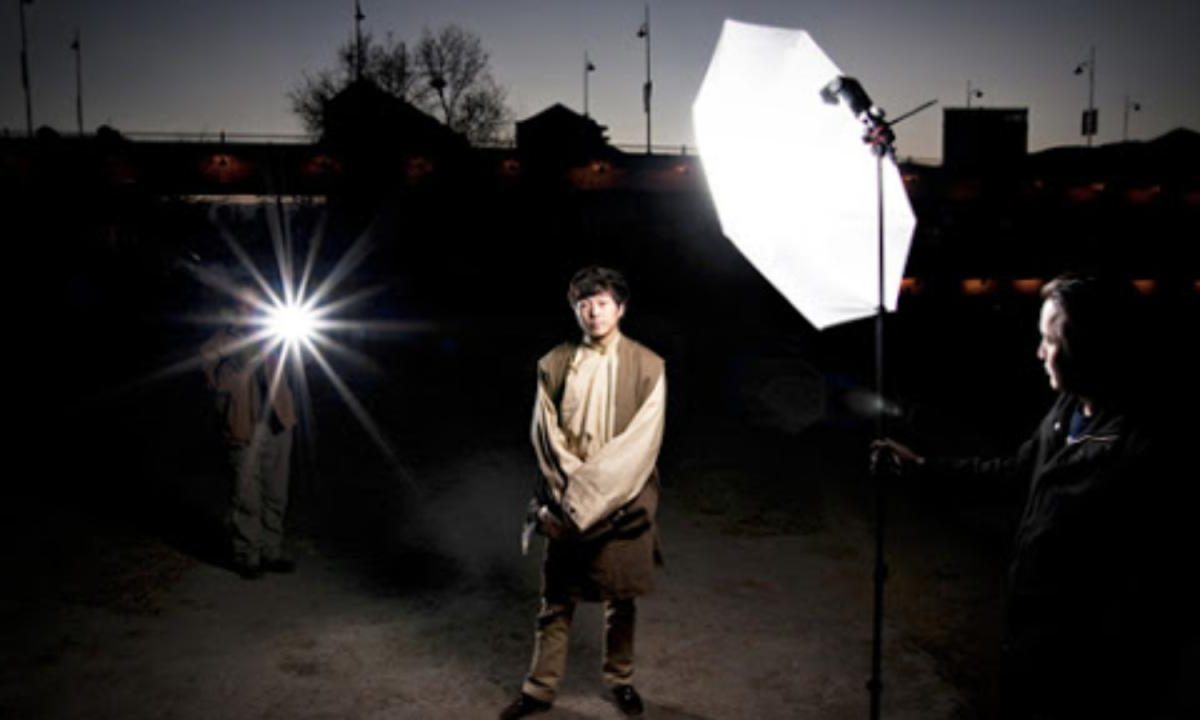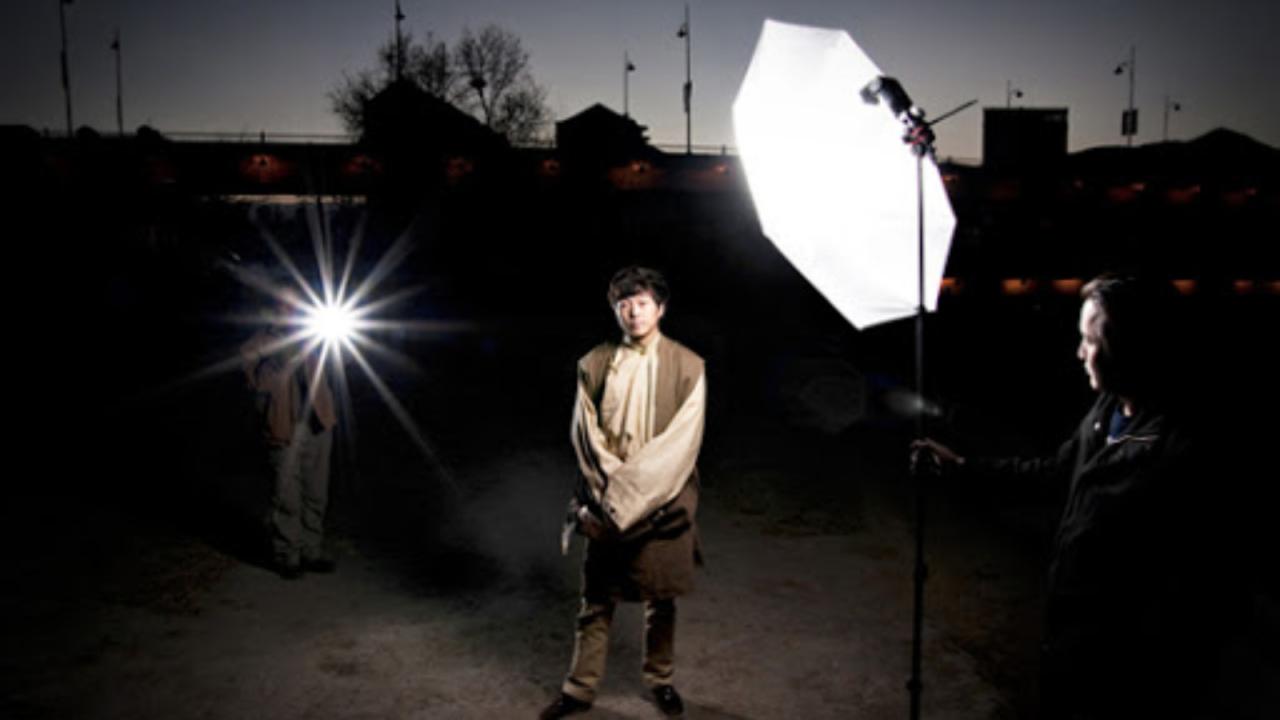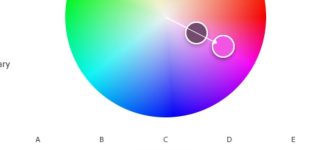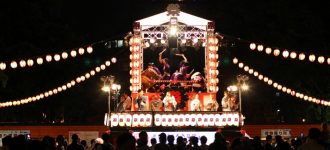
Bayangan yang Menjadi Karya Seni
Bayangan yang Menjadi Karya Seni, Rahasia Fotografi Cahaya Unik – Right, let’s get cracking then, shall we? This here article delves into the rather fascinating world of turning shadows into proper works of art, exploring how these fleeting forms can be the very heart and soul of a photograph. We’ll be examining the nitty-gritty of how photographers use light and shadow to craft compelling images, adding depth and meaning to their visual storytelling. It’s all about appreciating how something seemingly insubstantial can become the main event.
Esensi ‘Bayangan yang Menjadi Karya Seni’
The essence of “Shadows as Art” lies in understanding that shadows aren’t just the absence of light; they’re a potent visual element, a player in the grand scheme of composition. Photographers utilise shadows to shape form, create mood, and add layers of meaning. They can be the subject itself, a powerful silhouette, or a subtle detail that elevates the whole image. Think of it as painting with light and dark, using the shadows to sculpt the scene and guide the viewer’s eye.
Contoh Karya Fotografi Menarik
Let’s have a gander at some cracking examples. Consider the work of Man Ray, particularly his solarisations, where the play of light and shadow creates surreal and evocative portraits. His use of sharp contrast and unusual angles turns familiar faces into something extraordinary. Then there’s the work of Michael Kenna, a master of landscape photography, who often uses long exposures to capture shadows stretching across the land, transforming ordinary scenes into minimalist masterpieces. These images often feature a strong sense of geometry, with the shadows acting as bold graphic elements, drawing the viewer in.
Another top-notch example is the work of Saul Leiter, known for his street photography in New York City. Leiter’s images often feature shadows and reflections, creating a sense of mystery and ambiguity. He uses the shadows to obscure parts of the scene, leaving the viewer to fill in the gaps and creating a very personal and intimate experience. He’s a master of capturing fleeting moments, using the shadows to enhance the mood and atmosphere.
Daya Tarik Visual dan Filosofis
The visual and philosophical allure of shadows in photography is rather profound. Shadows provide a sense of depth, mystery, and intrigue. They can add a dramatic flair, a touch of melancholy, or even a sense of humour, depending on how they are used. Philosophically, shadows can represent the hidden aspects of reality, the subconscious, or the passage of time. They challenge the viewer to look beyond the surface and consider the deeper meanings embedded within the image. It’s a visual language that speaks volumes.
Perbandingan Penggunaan Bayangan dalam Berbagai Genre
Right then, let’s have a look at how shadows are used differently across various genres of photography. Here’s a table to give you a clearer picture:
| Genre | Teknik Pencahayaan | Komposisi | Tujuan Artistik |
|---|---|---|---|
| Potret |
|
|
|
| Lanskap |
|
|
|
| Arsitektur |
|
|
|
Rahasia Fotografi Cahaya Unik: Bayangan Yang Menjadi Karya Seni, Rahasia Fotografi Cahaya Unik
Right then, let’s delve into the nitty-gritty of capturing light in photography. It’s not just about pointing and shooting, you know. It’s about understanding how light behaves and how to bend it to your will, creating those stunning visuals that make your work stand out. This section will break down the fundamental techniques that will help you master the art of light and shadow, turning your photos from mere snapshots into genuine works of art.
Teknik Dasar Pencahayaan
Understanding the fundamentals of light is the cornerstone of great photography. Let’s examine the essential elements that contribute to the creation of compelling shadows.
- Arah Cahaya: The direction from which light strikes your subject is paramount. Side lighting creates strong shadows, adding drama and dimension. Front lighting tends to flatten the image, reducing shadows and creating a softer look. Backlighting, on the other hand, can produce silhouettes or a beautiful halo effect around your subject. Consider the example of portraiture; side lighting can accentuate the texture of skin, while front lighting is often preferred for a more flattering look.
- Intensitas Cahaya: The strength of the light directly impacts the contrast and depth of the shadows. Bright, intense light creates hard shadows with sharp edges. This is often seen in direct sunlight on a clear day. Conversely, soft light, like that found on an overcast day or when using a diffuser, produces softer shadows with less defined edges. The intensity also dictates the exposure settings needed. For instance, bright light may require a faster shutter speed or a smaller aperture to avoid overexposure.
- Sumber Cahaya: The source of the light significantly influences the overall mood of the photograph. Natural light, like sunlight, offers a dynamic range of possibilities, from the harshness of midday sun to the golden hour glow. Artificial light, such as studio strobes or continuous lights, provides more control and consistency. For example, a photographer might use a softbox with a strobe to create a soft, diffused light for a portrait, whereas natural light might be manipulated with a reflector to bounce light into the shadows.
Mengendalikan Bayangan: Langkah Praktis
Now, let’s get down to the practicalities. Here’s a simple guide to manipulating light and shadow using your camera settings.
- Aperture: This controls the amount of light that enters the lens. A wider aperture (smaller f-number, e.g., f/2.8) lets in more light, creating shallower depth of field and blurring the background, and can also affect the shadow definition. A narrower aperture (larger f-number, e.g., f/16) lets in less light, increasing the depth of field, and generally sharpens the shadows.
- Shutter Speed: This determines how long the camera’s sensor is exposed to light. A faster shutter speed freezes motion and can reduce the amount of light, affecting the sharpness of shadows, while a slower shutter speed allows more light to enter, which can create motion blur and can soften shadows.
- ISO: This measures the camera’s sensitivity to light. A lower ISO (e.g., ISO 100) is less sensitive and produces cleaner images with less noise, but requires more light. A higher ISO (e.g., ISO 3200) is more sensitive, allowing you to shoot in low light, but it can introduce digital noise, which can soften shadows and reduce image quality.
Hubungan Cahaya dan Bayangan dalam Fotografi
The interplay between light and shadow is the very essence of photography. Understanding this relationship is critical to creating compelling images. Consider how a photographer might use a single light source to illuminate a subject from the side, creating a strong shadow on the opposite side. This contrast between light and shadow adds depth and dimension to the image, making the subject appear more three-dimensional.
The manipulation of light and shadow can also be used to convey mood and emotion. High-contrast images, with strong shadows, can create a sense of drama or mystery, while low-contrast images, with soft shadows, can evoke a feeling of peace or tranquility. Consider a dramatic portrait lit with a single light source to create a chiaroscuro effect, versus a landscape photograph taken during the golden hour, where the soft light and gentle shadows create a sense of warmth and serenity. These are some of the techniques to create a captivating image.
Menggunakan Peralatan Fotografi Dasar
Let’s have a look at some of the tools you can use to shape and control light.
- Reflector: This is a simple yet versatile tool. Reflectors bounce light back onto the subject, filling in shadows and reducing contrast. For example, a silver reflector will produce a cooler, more specular highlight, while a gold reflector will create a warmer tone. Consider a portrait where a reflector is used to bounce light into the shadow side of the face, softening the shadows and revealing more detail.
- Diffuser: Diffusers soften and spread light, reducing harsh shadows. A diffuser can be as simple as a translucent umbrella or a piece of white fabric. For example, a photographer might use a diffuser to soften the harsh sunlight on a portrait, creating a more flattering and even light. This technique is often used in outdoor portraits to eliminate harsh shadows on the face.
Peralatan dan Perlengkapan yang Diperlukan
Right, chaps! Diving into the nitty-gritty of shadow photography, we’ll need to gear up properly. Like any good pursuit, having the right kit can make all the difference between a snap and a masterpiece. Let’s have a gander at the essential tools of the trade, shall we?
Kamera, Lensa, dan Aksesori yang Direkomendasikan
Choosing the right equipment is crucial. It’s like picking the right tools for a carpenter; you wouldn’t use a hammer to saw a plank, would you? Here’s a list of what you’ll need to get cracking:
- Kamera: A DSLR or mirrorless camera with manual controls is the way to go. You’ll want to be able to tweak the aperture, shutter speed, and ISO like a seasoned pro. A camera with good low-light performance is a bonus, especially when you’re chasing those elusive shadows.
- Lensa: We’ll delve into lenses in more detail below, but a good starting point is a versatile zoom lens or a prime lens. Consider the focal length carefully – wide-angle lenses for expansive scenes, telephoto for isolating subjects.
- Tripod: A sturdy tripod is an absolute must-have. It’s like having a reliable butler for your camera, keeping everything steady, especially during long exposures.
- Remote Shutter Release: This nifty gadget allows you to trigger the shutter without touching the camera, minimising any vibrations and ensuring pin-sharp images.
- Extra Batteries and Memory Cards: Because you never want to run out of juice or storage mid-shoot, do you?
- Camera Bag: Keep your precious gear safe and sound, ready for action at any moment.
Pilihan Lensa yang Ideal
The lens is your eye to the world, and choosing the right one is paramount. It’s all about the perspective, isn’t it? Here’s a breakdown:
- Lensa Wide-Angle: Perfect for capturing dramatic, sweeping shots. Imagine the shadows stretching across a vast landscape – a wide-angle lens is your best mate for that. For instance, a 16-35mm lens is a great choice.
- Lensa Telefoto: Ideal for isolating subjects and creating a sense of compression. Want to zoom in on a shadow cast by a distant building? A telephoto lens will bring it right into your frame. Think of something like a 70-200mm.
- Lensa Prime: Known for their sharpness and often wider apertures, prime lenses are excellent for low-light situations and creating a shallow depth of field. A 50mm f/1.8 is a classic and affordable option.
Filter yang Tepat untuk Meningkatkan Kualitas Foto Bayangan
Filters are like secret weapons, giving you that extra edge in shadow photography. They can enhance your images in ways you wouldn’t believe. Let’s see what’s on offer:
- Polarizing Filter: This bad boy reduces glare and reflections, boosting colour saturation and contrast. Think of it as a pair of sunglasses for your lens, allowing you to see the true colours and details. This is particularly useful when shooting near water or glass.
- Neutral Density (ND) Filter: These filters reduce the amount of light entering the lens, allowing you to use slower shutter speeds. Perfect for blurring motion or creating those dreamy long exposures.
- Graduated Neutral Density (GND) Filter: These filters have a gradient, with one part darker than the other. They’re brilliant for balancing exposure in scenes with a bright sky and a darker foreground.
Peralatan Pencahayaan yang Dapat Digunakan dalam Fotografi Bayangan
Lighting is the soul of photography, and when it comes to shadows, it’s the conductor of the orchestra. Here’s a table summarising the different types of lighting equipment and their pros and cons:
| Jenis Peralatan Pencahayaan | Kelebihan | Kekurangan |
|---|---|---|
| Cahaya Alami (Matahari) | Gratis, mudah diakses, menciptakan bayangan yang dinamis dan berubah-ubah. | Tidak dapat dikontrol, tergantung pada cuaca dan waktu. |
| Flash Eksternal (Speedlight) | Portabel, serbaguna, dapat digunakan untuk menerangi subjek atau menciptakan bayangan buatan. | Membutuhkan pengaturan dan dapat menghasilkan bayangan yang keras jika tidak digunakan dengan benar. |
| Lampu Studio (Strobe) | Output cahaya yang kuat, memungkinkan kontrol yang presisi atas pencahayaan. | Lebih mahal, membutuhkan ruang dan pengaturan yang lebih rumit. |
| Reflektor | Murah, mudah digunakan untuk memantulkan cahaya alami atau buatan. | Membutuhkan asisten atau posisi yang stabil. |
| Softbox/Payung | Melembutkan cahaya, mengurangi bayangan keras. | Membutuhkan peralatan tambahan dan dapat mengurangi output cahaya. |
Mengolah dan Memproses Foto Bayangan

Right then, once you’ve snapped those cracking shadow shots, the real fun begins! This is where you transform a good image into a proper work of art. The digital darkroom, as it were, is your oyster. Let’s get stuck in and see how we can finesse those shadowy masterpieces.
Proses Pengolahan Dasar untuk Foto Bayangan
The first port of call, naturally, is the basics. We’re talking about tweaking the exposure, the contrast, and the colours. Think of it like this: your camera captured the raw ingredients, and now you’re the chef, whipping up a culinary delight.
Here’s a breakdown:
- Exposure Adjustment: Shadows often appear darker than intended. You’ll likely need to increase the exposure slightly to bring out the details hidden in the darkness. Be careful not to overdo it, or you’ll lose the dramatic effect.
- Contrast Enhancement: Shadows thrive on contrast. Boosting the contrast will make the darks darker and the lights lighter, adding depth and punch to your image.
- Colour Correction: Sometimes, shadows can have unwanted colour casts. You might need to adjust the white balance or use colour grading to achieve the desired mood.
Meningkatkan Detail dan Ketajaman dalam Foto Bayangan
Now, let’s talk about taking it up a notch. Getting those details to pop and sharpening things up is crucial. Think of it as adding the final flourishes to a painting.
Here’s how to sharpen and enhance detail:
- Sharpening: Apply a touch of sharpening to make those edges crisp and defined. Don’t go overboard, or you’ll get unwanted artifacts.
- Detail Enhancement: Use features like “clarity” or “texture” sliders (available in most editing software) to bring out the fine details in the shadows and highlights.
- Noise Reduction: If you’ve shot in low light, you might have some noise (grain) in your image. Use noise reduction tools to smooth things out.
Contoh Langkah-Langkah Pengeditan Foto Bayangan
Right, let’s have a look at a practical example using a popular piece of software, Adobe Lightroom. This is just a starting point, mind you – feel free to experiment!
- Import Your Image: First things first, get your image into Lightroom.
- Basic Adjustments: Head to the “Develop” module. Start by adjusting the “Exposure” slider. Then, tweak the “Contrast” to your liking.
- Shadows and Highlights: Use the “Shadows” and “Highlights” sliders to fine-tune the details in the dark and light areas.
- Whites and Blacks: Adjust the “Whites” and “Blacks” sliders to set the overall tonal range of the image.
- Colour Grading: Use the “Color Grading” panel to add a particular mood or feel.
- Sharpening: In the “Detail” panel, add a touch of “Sharpening” to bring out the edges.
- Noise Reduction: If needed, use the “Noise Reduction” to smooth out any grain.
- Export: Once you’re happy, export the image in your desired format and resolution.
Kutipan dari Ahli Pengeditan Foto
Here’s a quote from a top-notch photo editor, shedding some light on the importance of post-processing in shadow photography:
“The magic really happens in post. It’s where you refine the vision, sculpt the light, and truly bring your shadows to life. Without it, you’re only halfway there.” – Anya Petrova, Award-Winning Photo Editor
Inspirasi dan Contoh Karya
Ah, right then, let’s have a gander at some truly smashing examples of shadow photography, shall we? We’ll delve into the techniques employed, the messages conveyed, and the chaps and chapesses who’ve made a name for themselves in this rather captivating field. Prepare to be chuffed!
Contoh Karya Fotografi Bayangan yang Menginspirasi
Right, let’s have a look at some cracking examples and the secrets behind them:
* Silhouette of a Couple at Sunset: This classic employs the golden hour light beautifully. The technique involves positioning the subjects against the setting sun to create a stark silhouette. The message is often one of love, togetherness, or a shared moment, rendered in a timeless fashion. The composition is usually simple, with the subjects’ shapes defining the image.
* Shadow Play on Architectural Details: This showcases the interplay of light and shadow on buildings. The technique uses natural light to highlight architectural features like arches, columns, or intricate carvings. The message can vary, perhaps emphasizing the beauty of the structure, the passage of time, or a sense of mystery. The photographer often plays with lines, shapes, and textures to create a visually striking image.
* Shadow Puppetry with Everyday Objects: This involves using household items or found objects to create whimsical shadow figures. The technique requires careful positioning of the light source and objects to cast specific shapes. The message is often playful, imaginative, or even satirical, depending on the objects and arrangement. It’s a clever way to tell a story.
* Abstract Shadows and Geometric Forms: These images focus on the abstract patterns and shapes created by shadows. The technique involves finding interesting shadow compositions in the environment. The message can be purely aesthetic, exploring the beauty of form and light, or it might hint at deeper themes of order, chaos, or perception.
Fotografer Terkenal dalam Fotografi Bayangan
A few blokes and birds have made a proper name for themselves in the world of shadow photography. Let’s tip our hats to a few:
* Man Ray: This American visual artist, known for his avant-garde approach, often incorporated shadow play in his work, particularly in his rayographs (photograms). His work is characterised by its experimentation with light and form, creating images that are both visually striking and conceptually rich.
* Moholy-Nagy: This Hungarian painter and photographer was a key figure in the Bauhaus movement. He explored the potential of light and shadow in his photograms, producing abstract and dynamic compositions. His work reflects his interest in modernism and the exploration of new visual languages.
* Josef Sudek: This Czech photographer was known for his poetic and evocative images, including those that made excellent use of shadows to create mood and atmosphere. He had a knack for capturing the quiet beauty of everyday life.
Galeri Virtual Gaya Fotografi Bayangan
Let’s have a virtual stroll through a gallery, shall we?
| Gaya | Deskripsi |
|---|---|
| Silhouette | Classic, often depicting figures against a bright background, emphasizing shape and form. |
| Architectural Shadows | Focuses on the play of light and shadow on buildings and structures. |
| Abstract Shadow Play | Emphasizes the geometric forms and patterns created by shadows, often devoid of recognizable subjects. |
| Shadow Puppetry | Utilizes everyday objects to create whimsical or narrative shadow figures. |
| Street Shadow | Captures the fleeting shadows in urban environments, often conveying a sense of the atmosphere. |
Sumber Daya Online untuk Inspirasi dan Tutorial Fotografi Bayangan, Bayangan yang Menjadi Karya Seni, Rahasia Fotografi Cahaya Unik
Right, if you’re keen to get cracking yourself, here are a few places to get your inspiration and learn a trick or two:
* Flickr: A treasure trove of images. Search for “shadow photography” or related terms to discover various styles and techniques.
* 500px: Similar to Flickr, with a focus on high-quality photography. A great place to find inspiration and see how the pros do it.
* YouTube: A plethora of tutorials. Search for “shadow photography tutorial” or specific techniques you want to learn.
* Photography Blogs: Numerous photography blogs offer tips, tricks, and inspiration for shadow photography. A quick Google search will unearth a wealth of resources.
* Online Photography Forums: Join online photography forums to connect with other photographers, share your work, and get feedback.
Akhir Kata
Sahabat, perjalanan kita telah usai. Kita telah menyaksikan bagaimana bayangan, yang awalnya tampak sederhana, dapat menjelma menjadi karya seni yang menginspirasi. Ingatlah, setiap bayangan menyimpan potensi keindahan yang tak terbatas. Dengan sedikit kreativitas, pemahaman teknik, dan sentuhan hati, kita semua mampu menciptakan karya fotografi yang mengagumkan. Jadikanlah setiap bayangan sebagai kesempatan untuk melihat dunia dengan mata yang lebih peka, dan biarkanlah cahaya membimbing kita dalam menciptakan karya seni yang abadi. Semoga Allah senantiasa membimbing langkah kita.






1 Komentar